
Rembrandt van Rijn Painting Reproductions 4 of 13
1606-1669
Dutch Baroque Painter
Rembrandt Harmenszoon van Rijn was born on July 15, 1606, in Leiden, the Netherlands, the ninth child of a miller and a baker’s daughter. In a family unconnected to the artistic profession, his path toward painting was not a matter of inherited craft but rather of singular ambition. His given name, Rembrandt, rare even then, eventually came to stand alone on his canvases - a declaration of autonomy and stature, not unlike his Renaissance predecessors.
As a boy, he was educated first at a local Latin School, then enrolled, briefly, at Leiden University. Whether this brief academic stint was formal or not, his studies exposed him to biblical texts and classical history - both of which would become foundational to his life’s work. By the age of fourteen, at his own request, he was apprenticed to Jacob van Swanenburgh, a modest local painter in Leiden, who introduced him to the technical demands of composition and the theatrical potential of light. In 1624, Rembrandt moved to Amsterdam to study under Pieter Lastman, a respected history painter. Lastman’s style was learned, dramatic, and decorative, yet Rembrandt’s debt to his teacher would lie more in thematic scope than visual manner.
Returning to Leiden in 1625, Rembrandt established himself as an independent master. In the years that followed, his early works retained echoes of Lastman’s stagecraft, but began already to move toward something deeper - a psychological sensibility shaped as much by shadow as by action. Alongside his friend Jan Lievens, he undertook a series of studies that probed the limits of expressive character - heads in exotic dress, figures with aged skin, faces in half-light. These were not portraits, yet they registered attention to the individual. The result was not beauty, but something more gripping - truth rendered with almost uncomfortable immediacy.
In 1628, he began to etch. Unlike his painting, etching was not common practice among Dutch painters. Rembrandt approached it experimentally, and often unpredictably, with a looseness and spontaneity that distinguished his plates from the more controlled and elegant engravings of his contemporaries. It was a medium he did not refine so much as revolutionize. By the end of his life, his printed images would circulate across Europe - fragile yet enduring ambassadors of his vision.
By 1631, Rembrandt had begun his transition to Amsterdam, the city that would define the remainder of his life. Initially entering the studio of Hendrick Uylenburgh, a dealer and workshop entrepreneur, Rembrandt found a lucrative outlet for portraiture. The portraits of this period - especially the famed "Anatomy Lesson of Dr. Nicolaes Tulp" - display an artist who, despite his youth, already diverged from convention. He avoided the superficial refinements that appealed to civic pride, offering instead a kind of staged intimacy. Though less accurate, perhaps, in likeness than his competitors, he achieved something less ephemeral: presence.
In 1634, he married Saskia van Uylenburgh, the dealer’s cousin and daughter of a well-connected patrician family. It was a socially advantageous union and offered him stability and respectability. By 1639, Rembrandt had acquired a substantial residence in the Jodenbreestraat, which functioned both as home and studio. This purchase would, in time, prove financially burdensome, but for a period, it matched the scale of his ambition.
This decade marks the height of his professional reputation. He was admired, patronised by the court of Prince Frederik Hendrik, and collected abroad. His pupils included Gerrit Dou, Carel Fabritius, and Govaert Flinck, and he was often at the centre of the most prestigious commissions. Yet already there are signs of divergence. The "Night Watch," completed in 1642, confounded expectations. Instead of static rows of figures, he depicted a moment of drama and confusion, light scattered across canvas like a burst of stage illumination. Admired by some, the painting also revealed a growing disconnect between Rembrandt and the formal, idealising tendencies gaining favour across Europe.
If this was a turning point, it was not only artistic. The same year, Saskia died. He was left with a son, Titus, and a difficult relationship with his late wife’s family. His domestic arrangements grew more complicated - Geertje Dircx, then later Hendrickje Stoffels, became not only his companions but the subjects of legal and social scrutiny. These entanglements were mirrored by financial trouble. The house he had bought, the collection of exotic objects he had amassed - all of it grew too costly to maintain. In 1656, he declared bankruptcy. The contents of his studio and home were inventoried and auctioned. The myth of Rembrandt’s poverty began here, and though not without truth, it fails to capture the extent to which he remained respected, if increasingly isolated.
The period following Rembrandt’s bankruptcy did not signify artistic decline. On the contrary, from the mid-1650s onwards, his work entered a phase of extraordinary depth and inventiveness. With fewer commissions, he was free from the compromises that portraiture demanded. Freed from financial illusion, he focused on the problems of painting with renewed introspection. The brushwork of these later years became broader, more openly expressive, even tactile. Light, once dramatic and directional, now hovered atmospherically around his subjects - not so much a spotlight as a permeating presence.
The "late style," as it has come to be termed, is less about narrative and more about states of being. In paintings such as "The Jewish Bride" or "Jacob Blessing the Sons of Joseph," gestures are reduced, space becomes intimate, and colour - often previously subdued in favour of tonal contrast - gains a warmer, richer palette. His figures are less defined by contour and more by mood and substance. These works, made with a confidence that allows visible revision, give the impression not of finality, but of movement suspended in time.
Portraiture did not vanish, but it evolved. In "The Syndics of the Drapers’ Guild" (1662), a late masterpiece, Rembrandt reconciled group portraiture with pictorial unity. The six men, formally arranged yet alert and inquisitive, appear as though interrupted in their deliberations. The moment is balanced between structure and spontaneity, a synthesis that had eluded most of his contemporaries. Despite the changing tastes of the period, commissions such as this suggest that Rembrandt was not without esteem, even in his final decade.
His numerous self-portraits - over 80 across painting, drawing, and etching - form an unmatched visual autobiography. These are not documents of vanity, but studies in the changing architecture of age, light, expression, and painterly style. In his youth, he had shown himself costumed, assertive, absorbed in roles drawn from the theatre or antiquity. In his old age, he depicted himself with humility and honesty - a man who had seen ruin and survival, and who no longer sought to disguise either. His final self-portraits, painted in the 1660s, convey a presence at once solitary and grand, weary and wise.
Rembrandt’s relationship with the prevailing art world had grown increasingly strained. The rise of Classicism - more refined, controlled, and idealised - stood in contrast to his frank realism. Commissions for major public works largely bypassed him. The Town Hall of Amsterdam, the Oranjezaal at Huis ten Bosch - the major decorative projects of the Dutch Golden Age - employed his rivals. Even when offered the opportunity to contribute to the Town Hall after the death of Govert Flinck, Rembrandt’s contribution, the "Conspiracy of the Batavians," was met with ambivalence. The work was too assertive, too turbulent for the architectural harmony the patrons had imagined.
Nevertheless, the myth that he was forgotten or discarded is imprecise. He continued to be admired by art lovers, and he was visited by international collectors and dignitaries. Prince Cosimo de’ Medici came to his studio in 1667, referring to him as “famous painter.” Collectors such as Don Antonio Ruffo in Sicily commissioned paintings, including the celebrated "Aristotle with a Bust of Homer" - a meditation on legacy and intellect that echoes the artist’s own preoccupations. In Italy, England, and Germany, his prints were avidly sought, even while at home, critical tastes turned cool.
Rembrandt’s life with Hendrickje Stoffels and his son Titus was anchored in affection, but also practical necessity. After bankruptcy, legal structures were put in place to shield Rembrandt from creditors and allow him to continue working under the auspices of a family-run art business. Yet both Hendrickje and Titus predeceased him - she in 1663, and he in 1668. Their losses left him truly alone in his final year.
He died on October 4, 1669, in Amsterdam, and was buried in the Westerkerk. No known likeness exists of his grave, and it is presumed to have been cleared after the standard period of internment. The man whose life had once been filled with collectors, pupils, and patrons died in relative obscurity, but not anonymity. Even then, among connoisseurs and fellow artists, he was held as a standard against which others were measured.
Rembrandt’s legacy cannot be measured solely by catalogue or attribution. The Rembrandt Research Project, begun in the late 20th century, has sought to clarify his oeuvre, distinguishing his hand from that of his students and followers. The very difficulty of this task speaks not only to his influence but to the nature of his studio - a place where emulation was not only encouraged but systematically practiced. Rembrandt’s fluid and ever-evolving style proved fertile ground for ambiguity. The act of authentication remains, in many cases, an act of interpretation.
What endures is the radical empathy of his vision. In depictions of old men, beggars, lovers, scholars, soldiers, prophets, or children, Rembrandt revealed the inward turn of thought, the suspension of time, the lived texture of existence. His late works, roughened and luminous, stand outside fashion, resisting both the theatricality of the Baroque and the restraint of the Classical. In their stead, Rembrandt gave us something less decorous and more enduring - the human seen not as ideal or spectacle, but as it is, with all its sorrow, grace, and mystery.
As a boy, he was educated first at a local Latin School, then enrolled, briefly, at Leiden University. Whether this brief academic stint was formal or not, his studies exposed him to biblical texts and classical history - both of which would become foundational to his life’s work. By the age of fourteen, at his own request, he was apprenticed to Jacob van Swanenburgh, a modest local painter in Leiden, who introduced him to the technical demands of composition and the theatrical potential of light. In 1624, Rembrandt moved to Amsterdam to study under Pieter Lastman, a respected history painter. Lastman’s style was learned, dramatic, and decorative, yet Rembrandt’s debt to his teacher would lie more in thematic scope than visual manner.
Returning to Leiden in 1625, Rembrandt established himself as an independent master. In the years that followed, his early works retained echoes of Lastman’s stagecraft, but began already to move toward something deeper - a psychological sensibility shaped as much by shadow as by action. Alongside his friend Jan Lievens, he undertook a series of studies that probed the limits of expressive character - heads in exotic dress, figures with aged skin, faces in half-light. These were not portraits, yet they registered attention to the individual. The result was not beauty, but something more gripping - truth rendered with almost uncomfortable immediacy.
In 1628, he began to etch. Unlike his painting, etching was not common practice among Dutch painters. Rembrandt approached it experimentally, and often unpredictably, with a looseness and spontaneity that distinguished his plates from the more controlled and elegant engravings of his contemporaries. It was a medium he did not refine so much as revolutionize. By the end of his life, his printed images would circulate across Europe - fragile yet enduring ambassadors of his vision.
By 1631, Rembrandt had begun his transition to Amsterdam, the city that would define the remainder of his life. Initially entering the studio of Hendrick Uylenburgh, a dealer and workshop entrepreneur, Rembrandt found a lucrative outlet for portraiture. The portraits of this period - especially the famed "Anatomy Lesson of Dr. Nicolaes Tulp" - display an artist who, despite his youth, already diverged from convention. He avoided the superficial refinements that appealed to civic pride, offering instead a kind of staged intimacy. Though less accurate, perhaps, in likeness than his competitors, he achieved something less ephemeral: presence.
In 1634, he married Saskia van Uylenburgh, the dealer’s cousin and daughter of a well-connected patrician family. It was a socially advantageous union and offered him stability and respectability. By 1639, Rembrandt had acquired a substantial residence in the Jodenbreestraat, which functioned both as home and studio. This purchase would, in time, prove financially burdensome, but for a period, it matched the scale of his ambition.
This decade marks the height of his professional reputation. He was admired, patronised by the court of Prince Frederik Hendrik, and collected abroad. His pupils included Gerrit Dou, Carel Fabritius, and Govaert Flinck, and he was often at the centre of the most prestigious commissions. Yet already there are signs of divergence. The "Night Watch," completed in 1642, confounded expectations. Instead of static rows of figures, he depicted a moment of drama and confusion, light scattered across canvas like a burst of stage illumination. Admired by some, the painting also revealed a growing disconnect between Rembrandt and the formal, idealising tendencies gaining favour across Europe.
If this was a turning point, it was not only artistic. The same year, Saskia died. He was left with a son, Titus, and a difficult relationship with his late wife’s family. His domestic arrangements grew more complicated - Geertje Dircx, then later Hendrickje Stoffels, became not only his companions but the subjects of legal and social scrutiny. These entanglements were mirrored by financial trouble. The house he had bought, the collection of exotic objects he had amassed - all of it grew too costly to maintain. In 1656, he declared bankruptcy. The contents of his studio and home were inventoried and auctioned. The myth of Rembrandt’s poverty began here, and though not without truth, it fails to capture the extent to which he remained respected, if increasingly isolated.
The period following Rembrandt’s bankruptcy did not signify artistic decline. On the contrary, from the mid-1650s onwards, his work entered a phase of extraordinary depth and inventiveness. With fewer commissions, he was free from the compromises that portraiture demanded. Freed from financial illusion, he focused on the problems of painting with renewed introspection. The brushwork of these later years became broader, more openly expressive, even tactile. Light, once dramatic and directional, now hovered atmospherically around his subjects - not so much a spotlight as a permeating presence.
The "late style," as it has come to be termed, is less about narrative and more about states of being. In paintings such as "The Jewish Bride" or "Jacob Blessing the Sons of Joseph," gestures are reduced, space becomes intimate, and colour - often previously subdued in favour of tonal contrast - gains a warmer, richer palette. His figures are less defined by contour and more by mood and substance. These works, made with a confidence that allows visible revision, give the impression not of finality, but of movement suspended in time.
Portraiture did not vanish, but it evolved. In "The Syndics of the Drapers’ Guild" (1662), a late masterpiece, Rembrandt reconciled group portraiture with pictorial unity. The six men, formally arranged yet alert and inquisitive, appear as though interrupted in their deliberations. The moment is balanced between structure and spontaneity, a synthesis that had eluded most of his contemporaries. Despite the changing tastes of the period, commissions such as this suggest that Rembrandt was not without esteem, even in his final decade.
His numerous self-portraits - over 80 across painting, drawing, and etching - form an unmatched visual autobiography. These are not documents of vanity, but studies in the changing architecture of age, light, expression, and painterly style. In his youth, he had shown himself costumed, assertive, absorbed in roles drawn from the theatre or antiquity. In his old age, he depicted himself with humility and honesty - a man who had seen ruin and survival, and who no longer sought to disguise either. His final self-portraits, painted in the 1660s, convey a presence at once solitary and grand, weary and wise.
Rembrandt’s relationship with the prevailing art world had grown increasingly strained. The rise of Classicism - more refined, controlled, and idealised - stood in contrast to his frank realism. Commissions for major public works largely bypassed him. The Town Hall of Amsterdam, the Oranjezaal at Huis ten Bosch - the major decorative projects of the Dutch Golden Age - employed his rivals. Even when offered the opportunity to contribute to the Town Hall after the death of Govert Flinck, Rembrandt’s contribution, the "Conspiracy of the Batavians," was met with ambivalence. The work was too assertive, too turbulent for the architectural harmony the patrons had imagined.
Nevertheless, the myth that he was forgotten or discarded is imprecise. He continued to be admired by art lovers, and he was visited by international collectors and dignitaries. Prince Cosimo de’ Medici came to his studio in 1667, referring to him as “famous painter.” Collectors such as Don Antonio Ruffo in Sicily commissioned paintings, including the celebrated "Aristotle with a Bust of Homer" - a meditation on legacy and intellect that echoes the artist’s own preoccupations. In Italy, England, and Germany, his prints were avidly sought, even while at home, critical tastes turned cool.
Rembrandt’s life with Hendrickje Stoffels and his son Titus was anchored in affection, but also practical necessity. After bankruptcy, legal structures were put in place to shield Rembrandt from creditors and allow him to continue working under the auspices of a family-run art business. Yet both Hendrickje and Titus predeceased him - she in 1663, and he in 1668. Their losses left him truly alone in his final year.
He died on October 4, 1669, in Amsterdam, and was buried in the Westerkerk. No known likeness exists of his grave, and it is presumed to have been cleared after the standard period of internment. The man whose life had once been filled with collectors, pupils, and patrons died in relative obscurity, but not anonymity. Even then, among connoisseurs and fellow artists, he was held as a standard against which others were measured.
Rembrandt’s legacy cannot be measured solely by catalogue or attribution. The Rembrandt Research Project, begun in the late 20th century, has sought to clarify his oeuvre, distinguishing his hand from that of his students and followers. The very difficulty of this task speaks not only to his influence but to the nature of his studio - a place where emulation was not only encouraged but systematically practiced. Rembrandt’s fluid and ever-evolving style proved fertile ground for ambiguity. The act of authentication remains, in many cases, an act of interpretation.
What endures is the radical empathy of his vision. In depictions of old men, beggars, lovers, scholars, soldiers, prophets, or children, Rembrandt revealed the inward turn of thought, the suspension of time, the lived texture of existence. His late works, roughened and luminous, stand outside fashion, resisting both the theatricality of the Baroque and the restraint of the Classical. In their stead, Rembrandt gave us something less decorous and more enduring - the human seen not as ideal or spectacle, but as it is, with all its sorrow, grace, and mystery.
296 Rembrandt Paintings
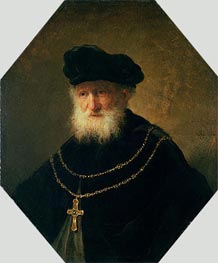
Head of an Old Man wearing a Cross 1630
Oil Painting
$1284
$1284
Canvas Print
$69.71
$69.71
SKU: REM-8908
van Rijn Rembrandt
Original Size: 67.4 x 55.9 cm
Gemaldegalerie Alte Meister, Kassel, Germany
van Rijn Rembrandt
Original Size: 67.4 x 55.9 cm
Gemaldegalerie Alte Meister, Kassel, Germany
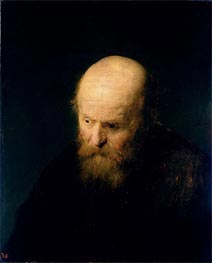
Head of a Bald, Old Man 1632
Oil Painting
$584
$584
Canvas Print
$55.47
$55.47
SKU: REM-8909
van Rijn Rembrandt
Original Size: 48.7 x 40.2 cm
Gemaldegalerie Alte Meister, Kassel, Germany
van Rijn Rembrandt
Original Size: 48.7 x 40.2 cm
Gemaldegalerie Alte Meister, Kassel, Germany
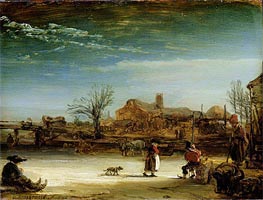
Winter Landscape 1646
Oil Painting
$702
$702
Canvas Print
$55.47
$55.47
SKU: REM-8910
van Rijn Rembrandt
Original Size: 16.6 x 23.4 cm
Gemaldegalerie Alte Meister, Kassel, Germany
van Rijn Rembrandt
Original Size: 16.6 x 23.4 cm
Gemaldegalerie Alte Meister, Kassel, Germany

Self Portrait with Helmet 1634
Oil Painting
$1309
$1309
Canvas Print
$68.48
$68.48
SKU: REM-8911
van Rijn Rembrandt
Original Size: 80.5 x 66 cm
Gemaldegalerie Alte Meister, Kassel, Germany
van Rijn Rembrandt
Original Size: 80.5 x 66 cm
Gemaldegalerie Alte Meister, Kassel, Germany
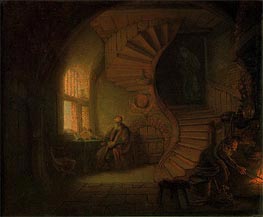
Philosopher in Meditation 1632
Oil Painting
$977
$977
Canvas Print
$55.47
$55.47
SKU: REM-8912
van Rijn Rembrandt
Original Size: 28 x 34 cm
Louvre Museum, Paris, France
van Rijn Rembrandt
Original Size: 28 x 34 cm
Louvre Museum, Paris, France
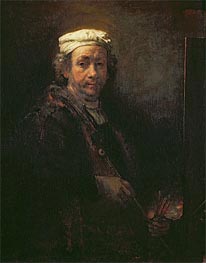
Self Portrait at his Easel 1660
Oil Painting
$1814
$1814
Canvas Print
$65.89
$65.89
SKU: REM-8913
van Rijn Rembrandt
Original Size: 111 x 90 cm
Louvre Museum, Paris, France
van Rijn Rembrandt
Original Size: 111 x 90 cm
Louvre Museum, Paris, France
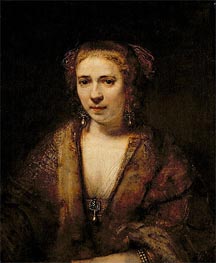
Portrait of Hendrikje Stoffels n.d.
Oil Painting
$1823
$1823
SKU: REM-8914
van Rijn Rembrandt
Original Size: 74 x 61 cm
Louvre Museum, Paris, France
van Rijn Rembrandt
Original Size: 74 x 61 cm
Louvre Museum, Paris, France
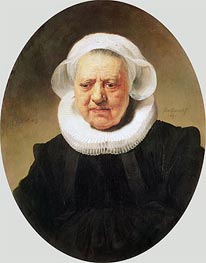
Portrait of Aechje Claesdar 1634
Oil Painting
$1588
$1588
Canvas Print
$66.80
$66.80
SKU: REM-8915
van Rijn Rembrandt
Original Size: 71 x 56 cm
National Gallery, London, UK
van Rijn Rembrandt
Original Size: 71 x 56 cm
National Gallery, London, UK
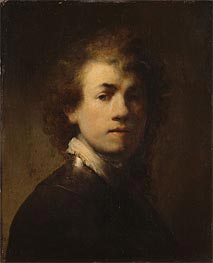
Self Portrait as a Courtly Squire c.1629
Oil Painting
$1161
$1161
Canvas Print
$55.47
$55.47
SKU: REM-8916
van Rijn Rembrandt
Original Size: 38 x 31 cm
Germanisches Nationalmuseum, Nuremberg, Germany
van Rijn Rembrandt
Original Size: 38 x 31 cm
Germanisches Nationalmuseum, Nuremberg, Germany
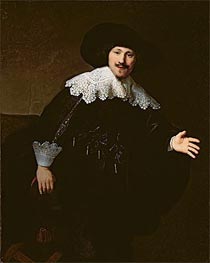
Portrait of a Seated Man Rising from his Chair 1633
Oil Painting
$2263
$2263
Canvas Print
$66.50
$66.50
SKU: REM-8917
van Rijn Rembrandt
Original Size: 121.6 x 98.4 cm
The Taft Museum, Cincinnati, USA
van Rijn Rembrandt
Original Size: 121.6 x 98.4 cm
The Taft Museum, Cincinnati, USA
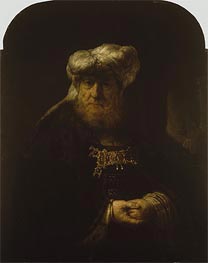
A Man in Oriental Costume n.d.
Oil Painting
$2702
$2702
Canvas Print
$66.19
$66.19
SKU: REM-8918
van Rijn Rembrandt
Original Size: 102.8 x 72.4 cm
Public Collection
van Rijn Rembrandt
Original Size: 102.8 x 72.4 cm
Public Collection
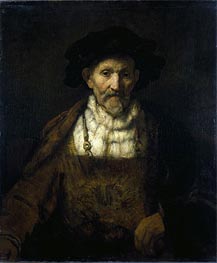
An Old Man in Fanciful Costume n.d.
Oil Painting
$1307
$1307
Canvas Print
$70.78
$70.78
SKU: REM-8919
van Rijn Rembrandt
Original Size: 78 x 66 cm
Private Collection
van Rijn Rembrandt
Original Size: 78 x 66 cm
Private Collection
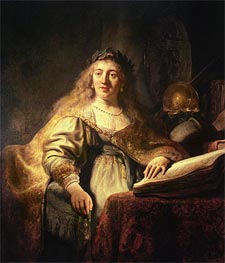
Saskia as Minerva 1635
Oil Painting
$2563
$2563
Canvas Print
$70.02
$70.02
SKU: REM-8920
van Rijn Rembrandt
Original Size: 138 x 116.5 cm
Private Collection
van Rijn Rembrandt
Original Size: 138 x 116.5 cm
Private Collection
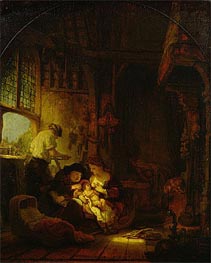
The Carpenter's Shop 1640
Oil Painting
$1164
$1164
Canvas Print
$55.47
$55.47
SKU: REM-8921
van Rijn Rembrandt
Original Size: 41 x 34 cm
Louvre Museum, Paris, France
van Rijn Rembrandt
Original Size: 41 x 34 cm
Louvre Museum, Paris, France
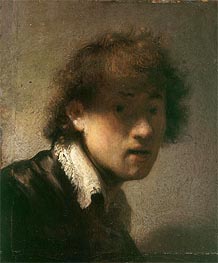
Self-Portrait 1629
Oil Painting
$584
$584
Canvas Print
$55.47
$55.47
SKU: REM-8922
van Rijn Rembrandt
Original Size: 15.6 x 12.7 cm
Alte Pinakothek, Munich, Germany
van Rijn Rembrandt
Original Size: 15.6 x 12.7 cm
Alte Pinakothek, Munich, Germany
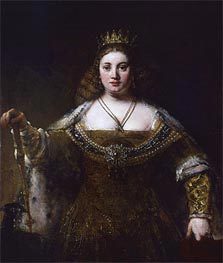
Juno c.1662/65
Oil Painting
$2063
$2063
Canvas Print
$60.95
$60.95
SKU: REM-8923
van Rijn Rembrandt
Original Size: 127 x 123.8 cm
Private Collection
van Rijn Rembrandt
Original Size: 127 x 123.8 cm
Private Collection
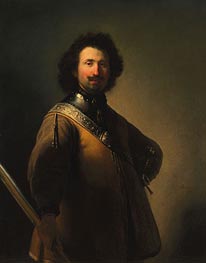
Joris de Caulerii 1632
Oil Painting
$2294
$2294
Canvas Print
$65.89
$65.89
SKU: REM-8924
van Rijn Rembrandt
Original Size: 102.9 x 84.3 cm
Fine Arts Museums of San Francisco, California, USA
van Rijn Rembrandt
Original Size: 102.9 x 84.3 cm
Fine Arts Museums of San Francisco, California, USA
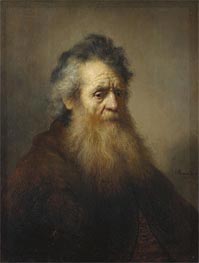
Portrait of an Old Man 1632
Oil Painting
$1686
$1686
Canvas Print
$63.44
$63.44
SKU: REM-8925
van Rijn Rembrandt
Original Size: 66.9 x 50.7 cm
Fogg Art Museum at Harvard University, Massachusetts, USA
van Rijn Rembrandt
Original Size: 66.9 x 50.7 cm
Fogg Art Museum at Harvard University, Massachusetts, USA
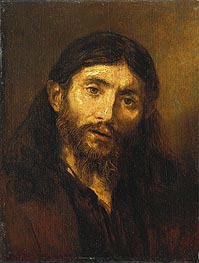
Bust of Christ c.1648/52
Oil Painting
$898
$898
Canvas Print
$55.47
$55.47
SKU: REM-8926
van Rijn Rembrandt
Original Size: 25.5 x 20.4 cm
Fogg Art Museum at Harvard University, Massachusetts, USA
van Rijn Rembrandt
Original Size: 25.5 x 20.4 cm
Fogg Art Museum at Harvard University, Massachusetts, USA
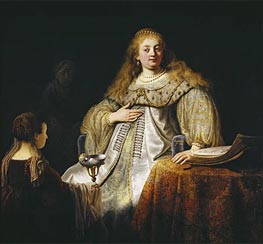
Artemis 1634
Oil Painting
$2618
$2618
Canvas Print
$78.11
$78.11
SKU: REM-8927
van Rijn Rembrandt
Original Size: 127 x 143 cm
Prado Museum, Madrid, Spain
van Rijn Rembrandt
Original Size: 127 x 143 cm
Prado Museum, Madrid, Spain

David and Jonathan 1642
Oil Painting
$1906
$1906
Canvas Print
$70.02
$70.02
SKU: REM-8928
van Rijn Rembrandt
Original Size: 73 x 61.5 cm
The State Hermitage Museum, St. Petersburg, Russia
van Rijn Rembrandt
Original Size: 73 x 61.5 cm
The State Hermitage Museum, St. Petersburg, Russia

Holy Family 1645
Oil Painting
$1903
$1903
Canvas Print
$65.13
$65.13
SKU: REM-8929
van Rijn Rembrandt
Original Size: 117 x 91 cm
The State Hermitage Museum, St. Petersburg, Russia
van Rijn Rembrandt
Original Size: 117 x 91 cm
The State Hermitage Museum, St. Petersburg, Russia
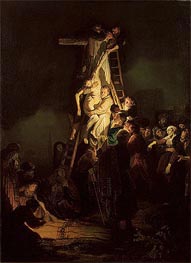
Descent from the Cross 1634
Oil Painting
$3445
$3445
Canvas Print
$61.15
$61.15
SKU: REM-8930
van Rijn Rembrandt
Original Size: 158 x 117 cm
The State Hermitage Museum, St. Petersburg, Russia
van Rijn Rembrandt
Original Size: 158 x 117 cm
The State Hermitage Museum, St. Petersburg, Russia
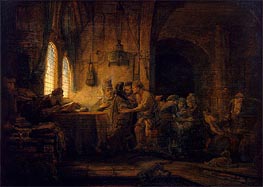
Parable of the Labourers in the Vineyard 1637
Oil Painting
$1258
$1258
Canvas Print
$55.47
$55.47
SKU: REM-8931
van Rijn Rembrandt
Original Size: 31 x 42 cm
The State Hermitage Museum, St. Petersburg, Russia
van Rijn Rembrandt
Original Size: 31 x 42 cm
The State Hermitage Museum, St. Petersburg, Russia